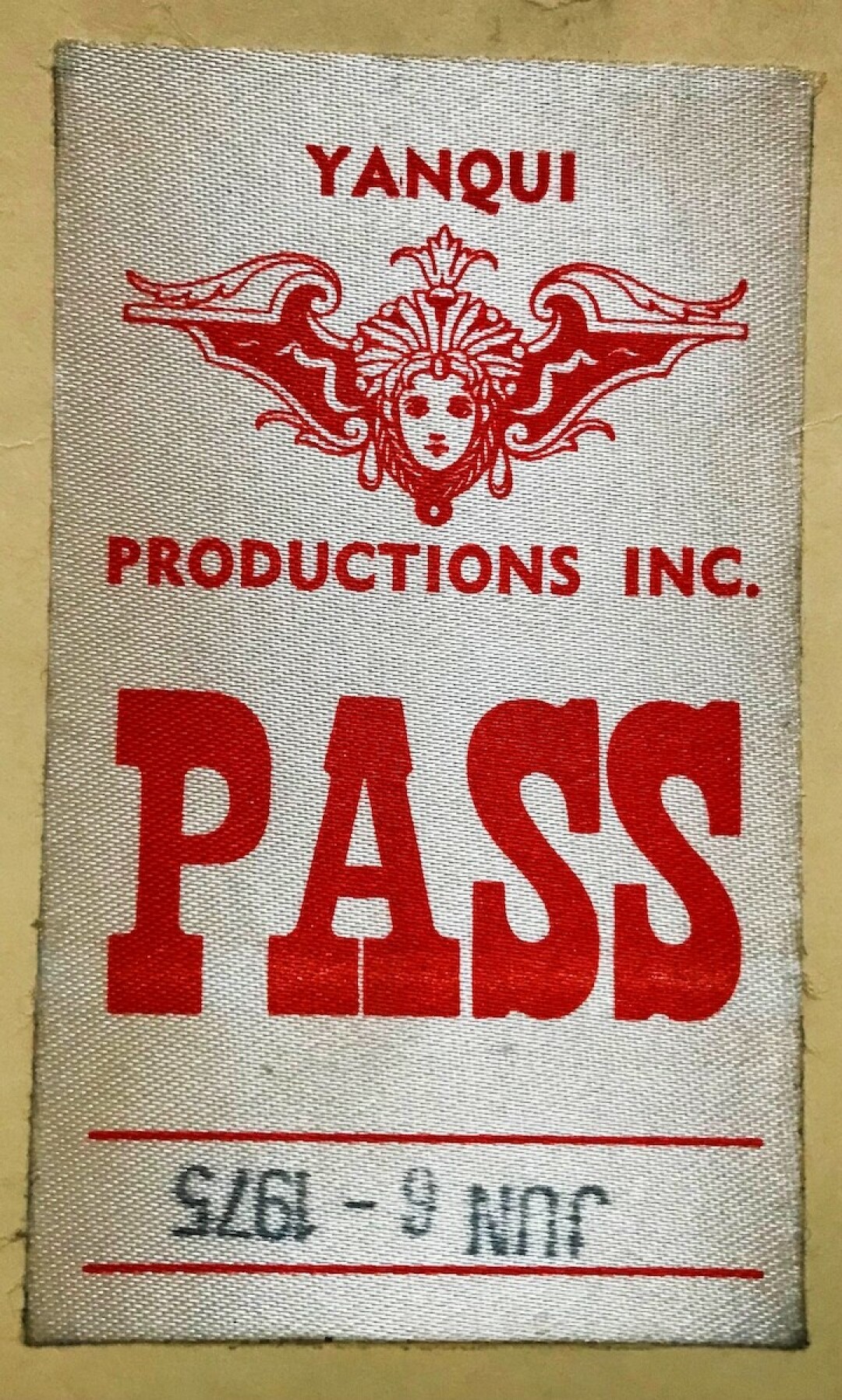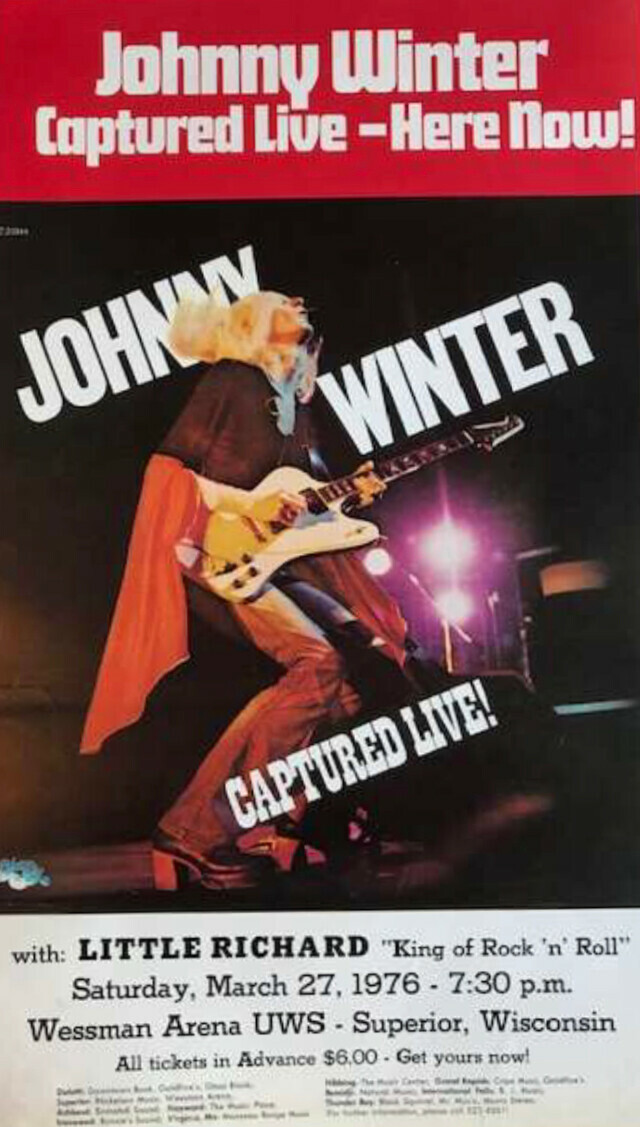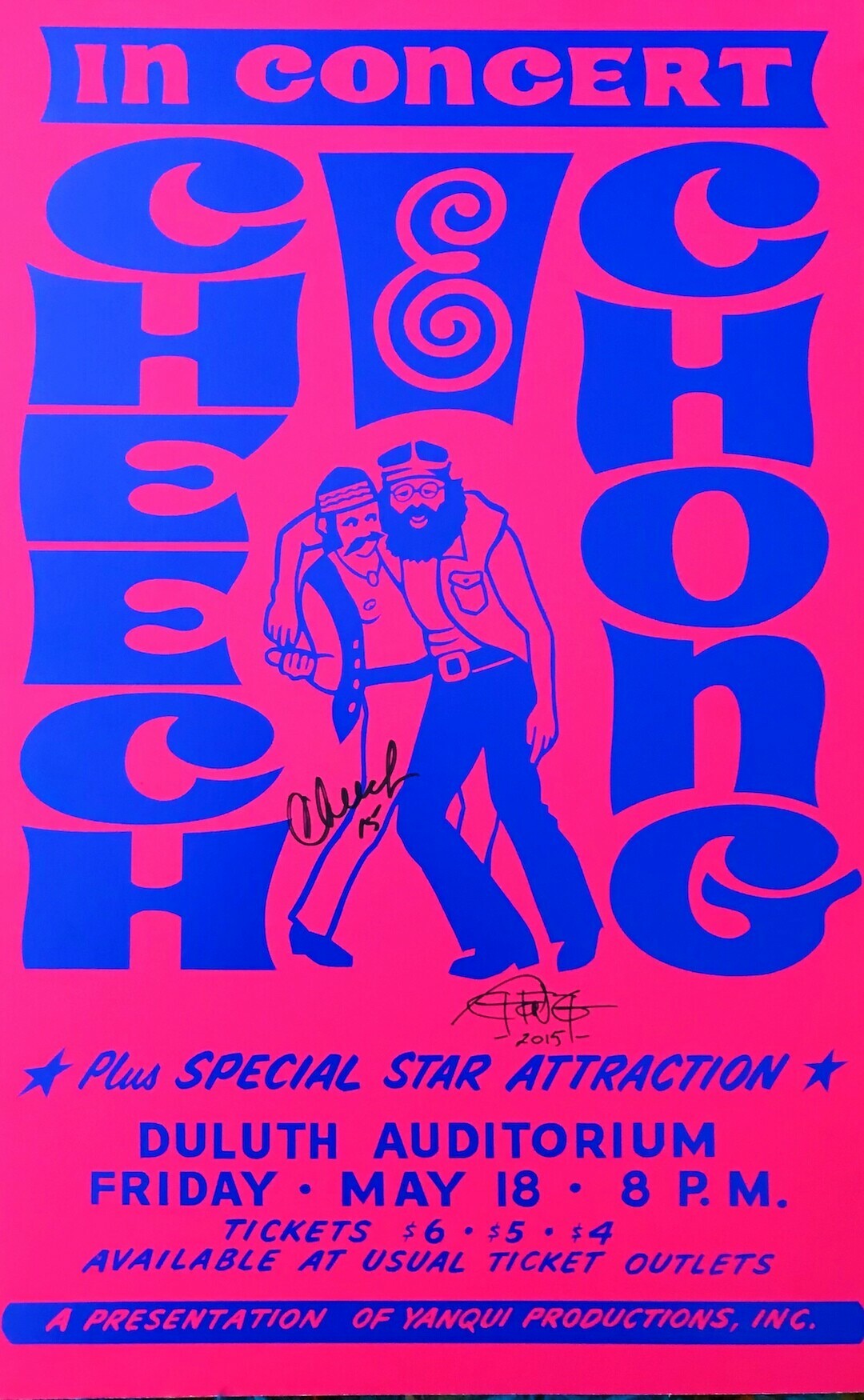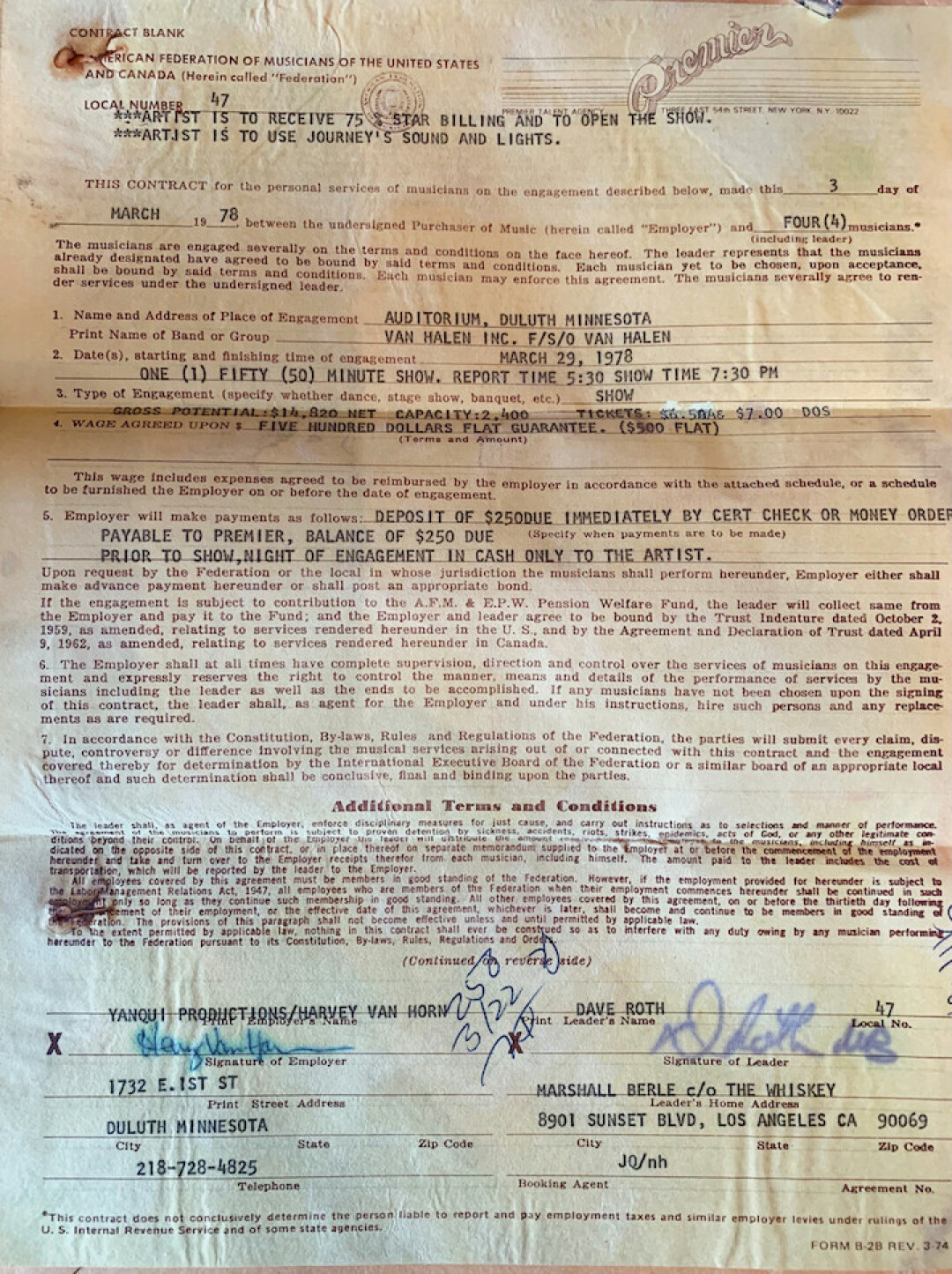Rock On, Duluth!
New book spotlights the almost forgotten history of arena rock in the Northland
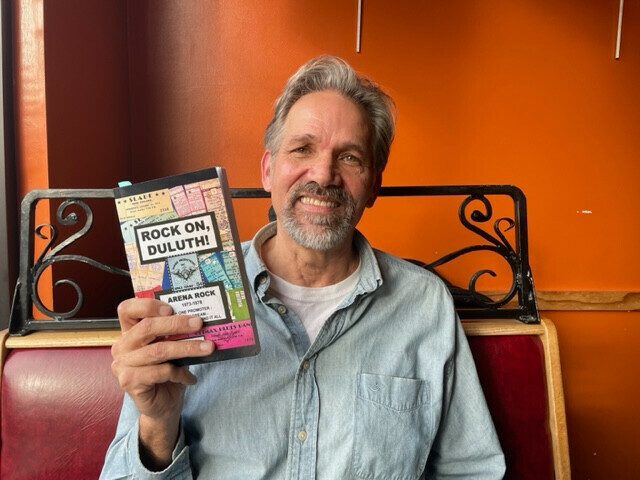
James Wiita and his book Rock On, Duluth! Photo by Ed Newman.
For those who were here in the Twin Ports during the ‘70s, the years 1973 to 1978 bore witness to an electrifying era that has now been captured in a book by James Wiita titled Rock On, Duluth!
It was a vibrant time, resonating with the anthems of arena rock, infused with the pulsating rhythms and soaring guitar solos that defined a generation. Duluth became a living testament to the power of music to ignite the spirit. As the echoes of amplified guitars reverberated through the cityscape, iconic bands and legendary performances carved a lasting imprint on the cultural landscape of Northland.
Wiita takes readers on a magic carpet ride back to those dynamic years, exploring the arena rock phenomenon that turned Duluth into a sonic haven. The book celebrates the rock 'n' roll moments that made this era truly unforgettable for those who were there.
It’s a book about Arena Rock, and about YANQUI Productions, a promoter who dreamed big and put everything on the line to make it happen.
James Wiita, who now resides in Cloquet, along with his wife and family, was born and raised in Duluth. After a long career in engineering that included design, illustrating and technical writing, this past year he devoted his time and energy to capturing many of the stories from that unusual time period when everything converged and anything seemed possible.
A long-time songwriter, singer and musician, Wiita decided these stories had to be recorded and shared. Rock On, Duluth! is a slice of local musical history that will surprise many who pick it up and browse its contents. The book is loaded with photos and posters – Slade, Van Halen, Kiss, J Geils Band, Dr. John, Rush, Blue Oyster Cult, Wishbone Ash, Aerosmith. Their circuits passed this way to the delight of thousands who were electrified by what was happening.
Here’s an interview with the author.
EN: Rock On, Duluth! essentially focuses on a five-year period in the life of YANQUI Productions. What was YANQUI Productions?
James M. Wiita: YANQUI was the brainchild of a young 20-something Duluthian who used his knowledge in the amusement business field to create a promotion company. The basic goal was to promote rock entertainment for the Northland and outlying areas. It grew to other specific endeavors during that five-year span and onward.
EN: Your book is packed with information about the music scene here, but has so much more than that. Your collection of stories not only features the artists and the local entrepreneur pioneer of arena rock who brought it all together, but also how it affected the kids here. What were the local reactions to what YANQUI Productions was doing?
JMW: Many of the people I spoke with recalled the name YANQUI when talking of our young exploits. Deep controversies occurred involving local authorities, the mayor, Duluth city council, parents and Duluth police over these rock concerts, with YANQUI making unwanted headlines in the local news. EN: Many of the artists who buzzed through Duluth became Rock and Roll Hall of Famers. How many of these groups did you see and who were your favorites?
JMW: I speak of the shows I attended in the writing with some musings and impressions. Of the artists represented in the book I saw a good majority. YANQUI concerts at the Duluth Arena and other venues were frequent, and inexpensive. Favorite overall had to be Wishbone Ash, Aerosmith and Kansas under one roof. I knew all three bands so well going in. The Johnny Winter/Little Richard show is locked in my best memory vault also. But ask me next week, I may change my mind.
EN: You mentioned that the original book was more than 500 pages. How did it end up being 250?
JMW: Economy. The original cost parameters I explored with my draft would have involved fundraising and time, and pricing may have deterred some readers. It is a story I’ve had a passion to tell for years, and so I did. I could see those areas to extract early on… But am proud of the entire look of the early draft. The story and times have many facets.
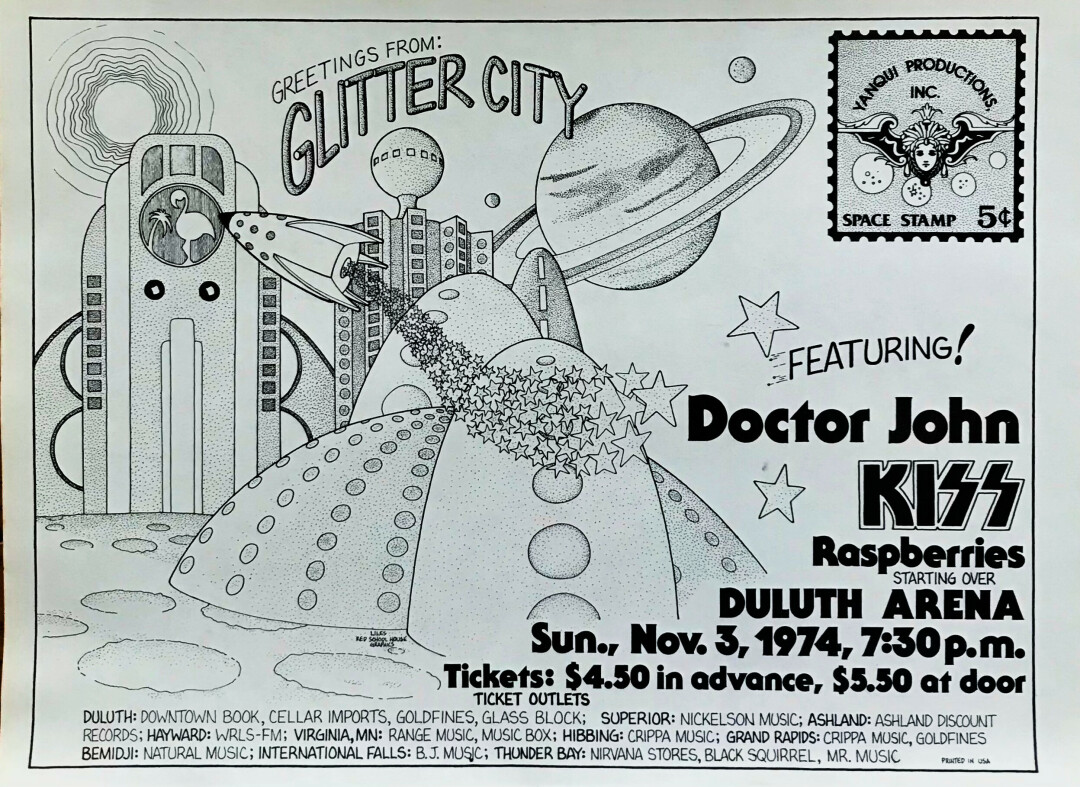
I was also eager to put something out in 2023, as it was the 50th anniversary of the forming of YANQUI. This original project is basically self-funded, with an early grant I received along with the help of a few very generous folk.
EN: The early part of the book was a little confusing for me because you start with The Class of 1986, the Skipped Class of 1988, The Class of 1998, etc. It took a while to figure that out. Can you explain your concept for readers who want to dig into your book?
JMW: I didn’t want to go in simple chronological order by year. The Table of Contents is the key. I broke the YANQUI history into an outline of 4 groups. The topmost are those Hall of Fame (HOF) bands put together by the year they were inducted. The HOF calls each year’s members “Class of…* So I followed that logic and since many people feel Johnny Winter is being snubbed, I called his chapter “skipped” – Seeing that he was inducted into the Blues Hall of Fame in 1988.
I then chronicled the other shows as headliners, those that were impactful. It’s basically by year, as there were so many great artists not in Cleveland – Yet? The third section was important to me because of the Native community so near and YANQUIs involvement there. The last section is the characters – names and faces that made up YANQUI.
EN: Your chapter titled Honor the Earth was an interesting and unexpected part of the story. Historically, it is placed right in the midst of these other events. What was YANQUI's connection to the Indigenous communities, especially regarding the Alcatraz incident and Wounded Knee?
JMW: Since YANQUI was invited to attend the Wounded Knee trial for a day, and it was the very day Marlon Brando was there, it gave me a springboard opportunity to talk about the times of those early struggles many of us recall. A number of the YANQUI show posters were done by Joe Liles and Red School House – an important part of the early Native community in Minneapolis. It also gave me a chance to speak of my personal reflections with a dear Ojibwa friend and neighbor who impacted my life in many ways.
EN: What were the primary venues for these shows? Mostly the DECC, Armory and Wessman Arena? Were there outdoor concerts back then and where would they have been?
JMW: An entire section of the book that I removed to economize dealt with the very public struggle of YANQUI and the three years of trying to have an outdoor concert at Wade Stadium in West Duluth. There were shouting matches, packed meetings and lawsuits. Another plan was sought for an outdoor show in Saginaw, right outside of town. Locals had their way in its cancellation. That section I called “The Pitfall” and it can perhaps be brought to light in the future.
A good majority of the shows were right at the old round coliseum known as the Arena portion of today’s DECC.
EN: Where can people find your book if they want to purchase?
JMW: Currently there are copies at the Pine Knot News in Cloquet. Or find me on Facebook under James Wiita. I’ve sold a number of them already that way. Just pm me for details. I may even deliver it if you are near! Or you can email me at jameswiita@gmail.com and I can give details.
